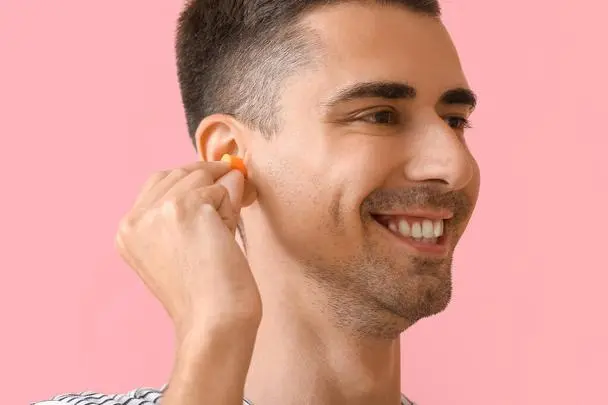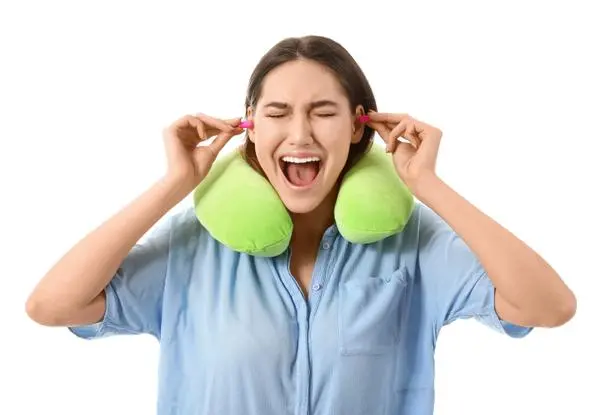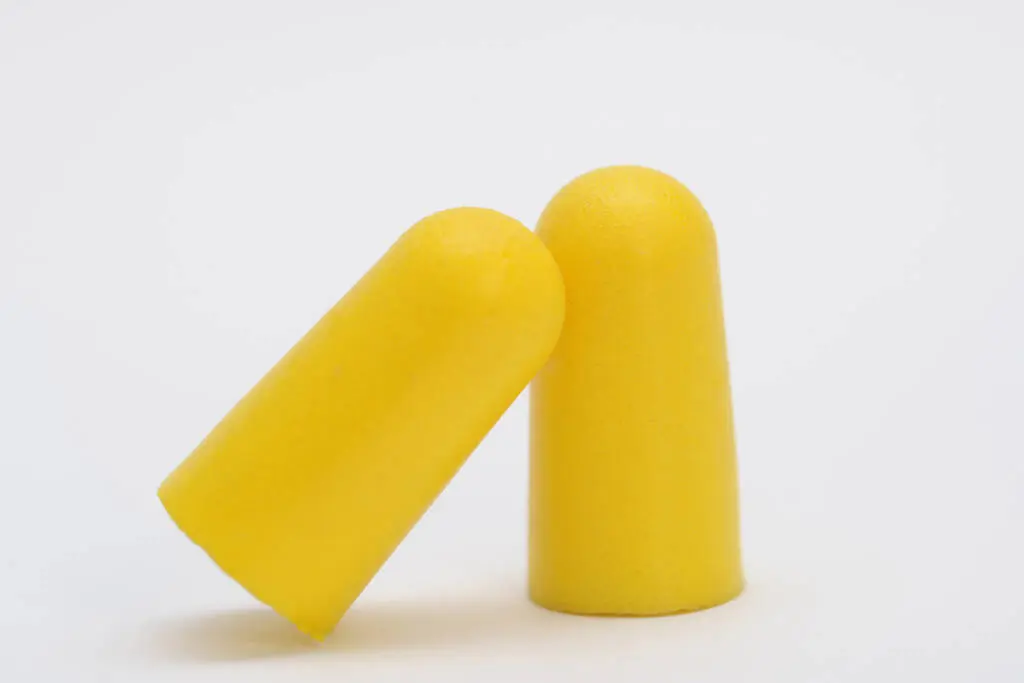Have you ever heard someone say they slept well because they had good quality earplugs? Well, did you know that these little things can really improve your sleeping habits?
Earplugs are often recommended to those who suffer from insomnia, snoring problems or noise during sleep. They prevent noise from entering your ears during sleep, thus allowing you to get a better night’s rest.
Earplugs come in various shapes and sizes. There are also several types of materials that manufacturers use to create them. These include silicone, latex rubber, memory foam, and even wood. The type of material used determines their effectiveness.
The best earplugs are made out of memory foam. It is soft and comfortable on the skin, but still provides protection against external noises. Memory foam earplugs are available in different densities so you can find one that fits your needs.
A Good Night’s Sleep
The average adult needs seven hours of uninterrupted sleep each night. This is essential for overall physical and mental well-being. However, poor quality sleep can lead to serious medical conditions like heart disease, diabetes, obesity, depression and even cancer. Poor sleep can also affect our ability to concentrate, focus and remember things.
Studies have shown that people who use hearing devices are less likely to suffer from insomnia and snoring, and experience fewer symptoms. And according to research published in the journal Otolaryngology – Head & Neck Surgery, people who use earplugs while sleeping report better sleep than those who don’t.
So what exactly makes a good earplug? There are three main components: the material used, how thick the tube is and whether the foam is rolled up or flat.
The most common type of earplug is a soft plastic one inserted into the ear canal. These tend to be fairly comfortable, but they can sometimes fall out during the night. They’re also very easy to lose.
Earplugs made from hard materials such as acrylic or silicon are usually much thicker, making them harder to insert and more difficult to keep in place. But they provide greater protection against noise pollution.
Thicker tubes make it easier to insert the earplug, because there’s more surface area to grip onto. But they can cause discomfort if they stick out too far.
And if the foam is rolled up, it creates a tighter fit. If it’s flat, it’s easier to slip out.
Wear Foam Earplugs
A relatively cheap solution could be foamy earplugs. Why foam earplugs? Well, these are usually mouldable because the material used to make them is soft enough to conform to the shape of your ear canal. However, it can be quite difficult to buy the correct size, so you might find yourself having to purchase several sets, until you find the ones that work best for you. You could even try sticking some cotton wool into your ears to block out noise, but this won’t really help you sleep.
Basic foam earplugs are disposable earplugs and are often sold in pairs, which means you can share them with a partner. This way, everyone gets an equal amount of protection.
You should always wear earplugs when you go to bed. Even if you only need them occasionally, it’s important to get used to wearing them at night. Otherwise, you may forget about them and end up waking feeling tired and drowsy.
You can also use them when travelling by plane, train or bus to block outside noise.

Types and How to Use
Earplugs come in many different shapes, sizes and materials. There are different types of earplugs available that can be used to block out loud sounds and white noise, including reusable earplugs made from soft materials like wax earplugs, soft foam earplugs and soft silicone earplugs.
You can also get custom-fitted earplugs and custom-made earplugs to properly fit your ear shape. Here are different types you may want to consider.
Expandable foam earplugs
These are typically the most popular type of earplugs because they provide both comfort and protection. You can buy them online and at your local supermarket. Expandable foam earplugs are usually sold in pairs. One goes in one ear and the other goes in the other ear. You simply roll the pair into a cylinder and place it halfway down your ear canal. Once inserted, the earplug expands inside your ear, blocking outside noise.
Cone-shaped earplugs
These earplugs are often used for everyday noise reduction. They are also great for sleeping since they fit snugly in your ear canal and block out sounds.
Sealed foam earplugs (noise reduction)
If you travel frequently, sealed foam earplugs are a good choice. They are made from high quality materials and have been tested to ensure their effectiveness. The earplugs are designed to seal out all ambient noise. They are perfect for people who spend time in busy airports, trains, buses, and subways.
Other Benefits
Earplugs are one way to ensure you get a good night’s rest. They can prevent noise pollution and keep out unwanted sounds like snoring, coughing, crying babies and traffic noise.
They can also allow people to spend longer periods of time asleep without waking up and disrupting their sleep cycle. This can make it easier to fall asleep again later on.
Getting enough sleep has a wide range of health benefits. If you’re not getting enough sleep this can cause weight gain, fatigue, depression and even heart disease.
A lack of sleep caused by noise at night can also lead to increased blood pressure, headaches, irritability, memory problems, mood swings and impaired decision making.
Risks
Earplug use has been shown to be relatively safe for short periods of time, but there is little information available regarding its effects over longer periods of time. There are some risks associated with prolonged earplug use, including:
- A build-up of earwax
- Damage to the eardrums
- Ear infections
- Temporary hearing loss
- Allergic reactions.

How To Choose A Good Pair Of Earplugs
Choosing the right kind of earplugs depends on what you plan to use them for. If you’re going to be traveling or spending lots of time concentrating at work, then sealed foam earplugs may be the best option for you.
If you’re camping out or looking for something that will help you sleep better, choose a pair of cone-shaped earplugs.
Finally, if you’re looking for something comfortable, choose a pair of expandable foam earplugs.
How To Use Them
The first step when choosing an earplug is to decide if you need to wear them during the day as well. Some people find that earplugs only work effectively when worn at night. Others prefer to wear them throughout the day.
The next thing to consider is where you intend to place the earplugs. Will you be sleeping in a hotel room, car, airplane, train, bus or subway? You should also think about how loud the environment around you is. Are you going to be in a quiet library, coffee shop or concert hall? Or do you plan to go to a party or nightclub?
When choosing a pair of earplugs, try not to buy cheap ones. Cheap earplugs often contain chemicals that could damage your hearing.
To insert earplugs correctly, follow these steps:
1. Remove any jewelry from your ears before insertion.
2. Place the tips of the earplugs into your outer ear.
3. Gently push the earplugs down, until they reach the bottom of your ear canal.
4. Hold the earplugs in place by gently pulling on the ends of the earplugs.
5. Repeat this process for each ear.
6. Once inserted, leave the earplugs in overnight.
7. The next morning remove the earplugs and wash them thoroughly. With foam earplugs you can wipe off any debris with a dry, clean cloth.
8. You can now put them back in whenever you want to block out sound.
9. If you have trouble sleeping with earplugs in, try removing them after one hour and reinsert.
10. If you still have trouble falling asleep, take out the earplugs completely.
11. Finally, if you still can’t fall asleep, try wearing headphones instead of earplugs.

The Takeaway
Earplugs are a safe, inexpensive way to improve your sleep. They’re easy to set up and don’t need much maintenance. If you’re having trouble sleeping because of loud noises, consider investing in some quality foam earplugs. They don’t cause damage to the eardrum and there are no known long-term effects associated with frequent use of foam earplugs.
However, if you’re planning on using earplugs during the day while driving, swimming or working, you should consult with your doctor before doing so.





